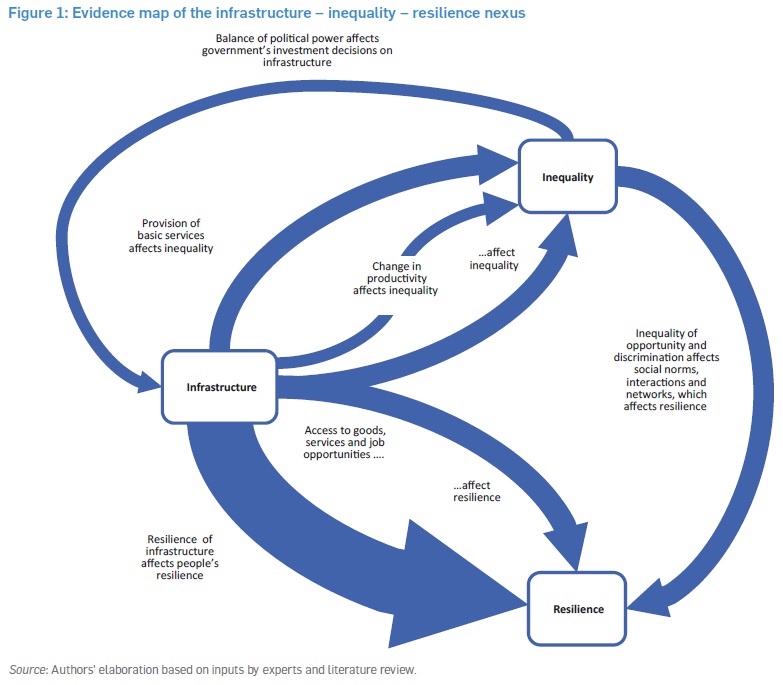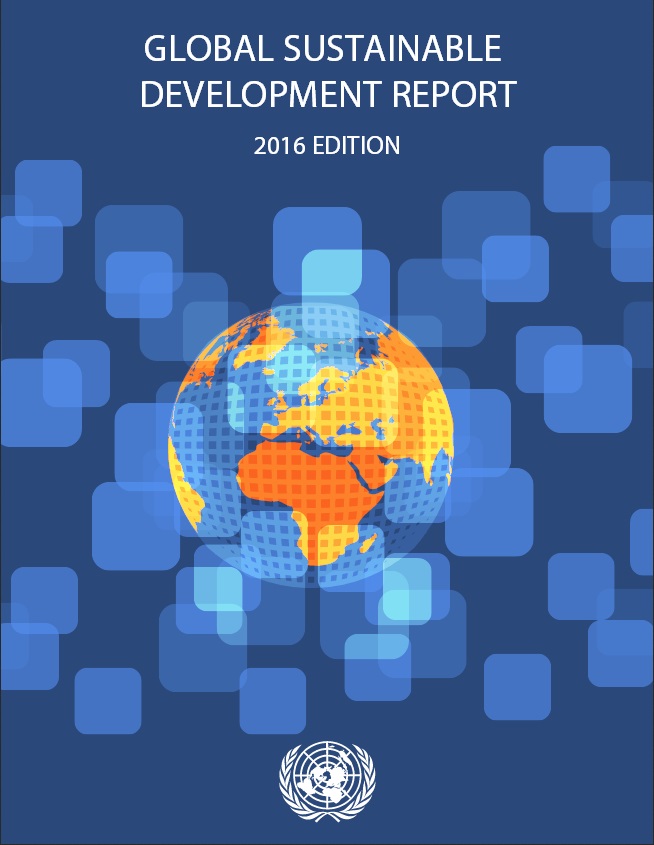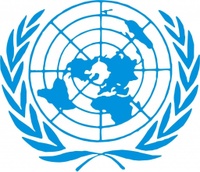Global Sustainable Development Report 2016
EXECUTIVE SUMMARY
The following is an executive summary of the Global Sustainable Development Report (GSDR) 2016. Building upon the 2014 and 2015 reports, the current report responds to the mandate from the Rio+20 Conference to contribute to strengthening the science-policy interface for sustainable development in the context of the high-level political forum on sustainable development (HLPF).
The preparation of the report involved an inclusive, multi- stakeholder process drawing upon scientific and technical expertise from within and outside the United Nations. 245 scientists and experts based in 27 countries, including 13 developing countries, contributed to the report. 62 policy briefs were submitted in response to an open call. Twenty agencies, departments and programmes of the UN system contributed to the report with inputs, comments, suggestions or revisions.
Major international conferences and summits in 2015 – on financing for development, sustainable development, and climate change – have defined a new sustainable development agenda for the next 15 years. At all levels, from global to local, attention is turning to implementing this ambitious agenda. This is the context in which this year’s Global Sustainable Development Report appears.
Leaving no one behind and the new Agenda
Ensuring that no one is left behind is a fundamental guiding principle for the implementation of the 2030 Agenda for Sustainable Development. In implementing the Agenda, countries and stakeholders will have to make choices on where, when and how to act. In that process, they have pledged to endeavour to reach the furthest behind first. Fifteen years from now, when the current and the next generations together assess the implementation of the 2030 Agenda, a key measure of success will be the extent to which it has allowed improvement in the lives of the poorest and most vulnerable, regardless of gender, race, age, religion, place of residence or any other factor. Many organizations have started to work on the implications of the call to leave no one behind for the delivery of the 2030 Agenda and for their missions.
Given the importance of this notion in the 2030 Agenda, it is critical that some clarity exists on its implications for implementing the Agenda. At the conceptual level, three main questions need to be addressed. First, who are those being or at risk of being left behind? Second, how can strategies and policies reach them in practice? And third, what types of strategies and policies would be appropriate in order to leave no one behind? Science can inform decision- making on these three broad questions. Through this, it can also provide elements to assess how ambitious and challenging it will be to realize the commitment of leaving no one behind, by revealing to what extent strategies and policies that have been used in various SDG areas are aligned with this objective, and what their success has been in achieving it.
A nexus approach: The infrastructure – inequality – resilience nexus
Nexus approaches, which examine sets of issues as a whole and focus on the connections between them, have been one of the lenses through which the GSDR has approached the SDGs. The aim is to strengthen the science-policy interface by showing policymakers how key interlinkages are analyzed by the scientific community, while providing the scientific community with key policy questions and highlighting areas for policy-relevant research.
This year’s report examines interlinkages between infrastructure, inequality and resilience. These areas relate to several SDGs and have strong connections with inclusiveness and leaving no one behind. Chapter 2 highlights the main channels of interconnection among these areas put forward by 24 contributing scientists from various disciplines and United Nations experts, as well as a review of findings from several hundred publications. Extensive bodies of literature have focused on each of these areas. For example, infrastructure has received significant attention in development circles, due to its perceived critical role in spurring economic growth and development. Yet, scientists focusing on each of those fields typically hail from different communities, making links between the three areas less commonly studied than any of the three areas taken in isolation.
Perspectives of scientists on technology and the SDGs
Chapter 3 of the GSDR presents a range of perspectives of scientists on the role of technology for the achievement of the SDGs. Understanding the role of technology for SDGs is critical because technology has greatly shaped society, economy and environment and vice versa. In fact, technology, society and institutions co-evolve. Hence, technology progress requires institutional adaptations and may be constrained by social issues. Policy actions to achieve the SDGs and ensure that no one is left behind need to consider these interlinkages.
Technology is essential for achieving the SDGs and reaping the benefits of synergies among them, as well as for minimizing trade-offs among goals. Shared appreciation of this importance of technology is reflected in its significant presence in the Sustainable Development Goals and targets. Indeed, technology is not only captured in SDG17 as a key means of implementation. Among the 169 targets, 14 targets explicitly refer to “technology” and many other targets relate to issues that are often largely discussed in technology terms. In general terms, the targets most closely related to technology fall in three categories: those that relate to significant overall technology performance improvement; targets for universal access to specific technologies; and targets that delineate elements of global effective innovation systems for sustainable development. The technology-related SDG targets are much less quantitative than corresponding targets proposed in the scientific literature.
Inclusive institutions: the example of national councils for sustainable development and parliaments
There is clear awareness that understanding institutions is important for delivering on the imperative to leave no one behind. Institutions are essential enablers of inclusiveness, even though not the sole ones. The 2030 Agenda does not prescribe institutional models for the national level, but outlines governance principles that institutions should strive to achieve, such as “effectiveness, inclusiveness, and accountability“ (SDG 16), responsive, inclusive, participatory and representative decision-making at all levels” (target 16.7) and “policy coherence” (target 17.14).
Institutions can trigger behaviours and trends that can have positive or negative impacts for development outcomes, and in particular for inclusiveness. Inclusive institutions bestow equal rights and entitlements and enable equal opportunities, voice and access to resources and services. They can be based on principles of universality (e.g. universal access to justice or services), non-discrimination (e.g. inheritance laws that protect widows’ land rights), or targeted action (e.g. affirmative action to increase the proportion of women political representatives). On the other hand, power holders can shape institutions for the benefit of some rather than all groups of society. Institutions that are not inclusive potentially withhold rights and entitlements, can undermine equal opportunities, voice and access to resources and services and perpetuate economic disadvantage. They can also have a negative impact on non- economic dimensions of poverty, including lack of access to services, lack of voice in decision-making, and vulnerability to violence and corruption.
To download the full report, please click here.

